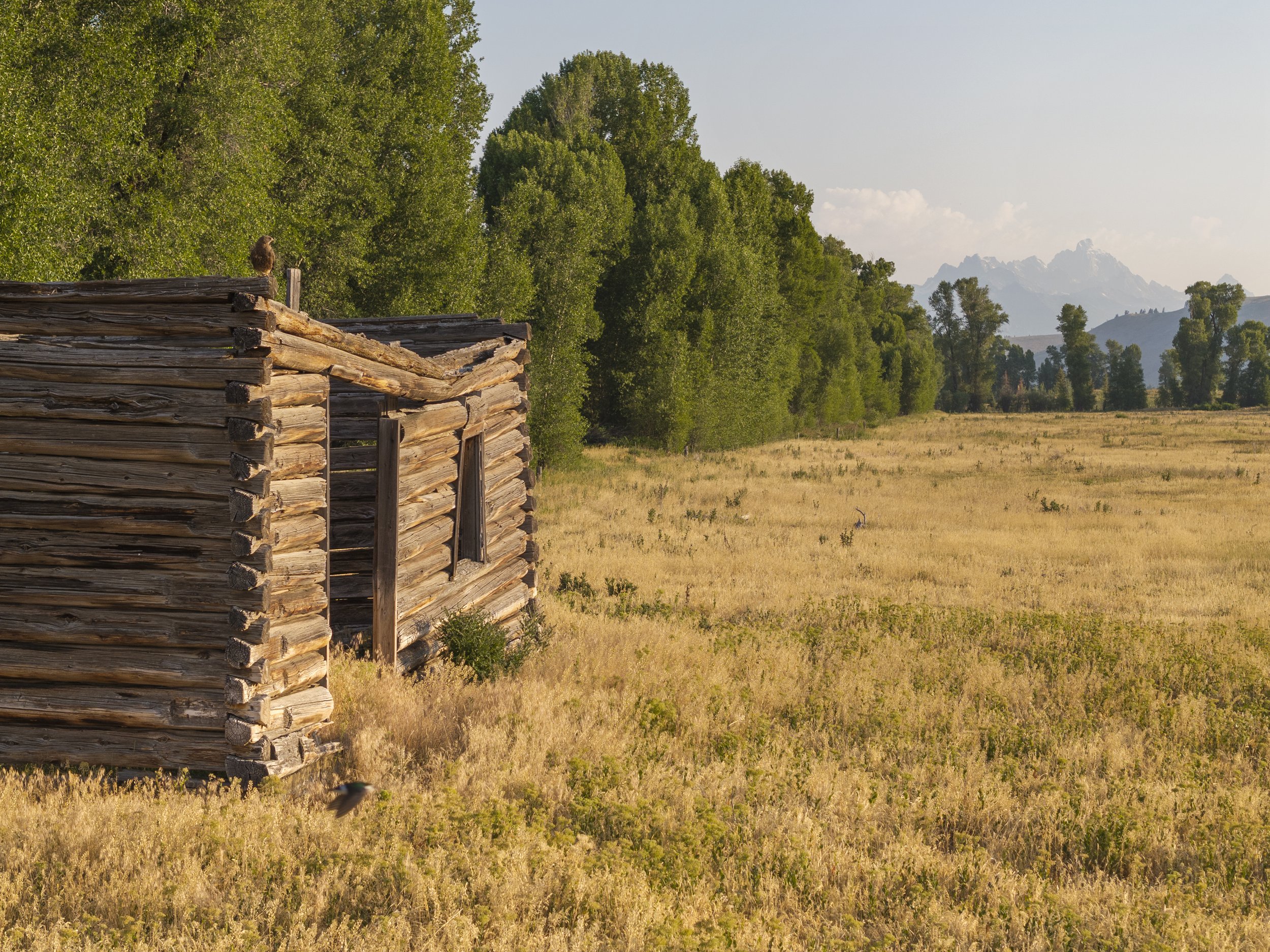
Originally homesteaded by early pioneers Sylvester and Mary Wilson, this land is rich in heritage.
The first 4th of July Celebration in Jackson Hole at South Park, in the year 1890.
Family History
In 1889 the Wilson-Cheney company left Idaho and set out across Teton Pass. The arduous journey lasted two weeks, and the group eventually landed in what is now Wilson, WY. The group had cut trees and established a rudimentary road for the wagons over Teton Pass. The Wilson-Cheney party, including leaders Nick Wilson as well as Sylvester and Mary Wilson, husband and wife, was the first group of settlers to bring women, children and wagons over Teton Pass into the Valley, which at the time had a population of only 28 individuals. The Wilson-Cheney party more than doubled that population.
Sylvester and Mary homesteaded land in Jackson Hole, which eventually included the 120 acres in South Park.
The first cemetery above the South Park property was established in 1891 with the deaths of two of Sylvester’s grandchildren, Sarah (12) and Joseph (10) from diphtheria.
Sylvester applied for permission to start a school in 1894, and construction of the schoolhouse, the remains of which are still on the property today, began soon thereafter. Sylvester’s son Ervin donated the land for the site of the school. The schoolhouse was completed and permission granted in 1896, yet Sylvester, who had promised the school to his wife Mary, died in 1895 before it was finished. Ervin died in 1897, survived by his wife Mary Wilson. The school operated at the site until 1907.
The South Park property remains in the family to this day, still held as grazing land and hay production for cattle.
The South Park Schoolhouse
The first school in Jackson Hole was held in the log home of early pioneer Sylvester Wilson in 1894. The next year, Sylvester sold enough cattle at the market in Opal, WY, to hire a teacher from Laramie, Wyoming. He applied to Uinta County (prior to the founding of Teton County) to obtain permission for a school. Early residents pitched in to cut logs for the new schoolhouse, and pioneer Stephen Leek sawed the lumber for its roof at his sawmill. Due to an Indian scare that year, the school was built up to the square but not completed. Sylvester died on August 2, 1895, and never saw the school completed. Later that year, they received word from Uinta County that School District #37 was approved, and Sylvester’s son, Ervin, and his wife Mary Jane donated the land for the new school on their South Park Ranch.
Nate Wilson, born in 1896, wrote in his historical notes that the schoolhouse “was about three-quarters of a mile from our home, and my brother, Joy, and I carried our lunches in five-pound lard or syrup pails. We had a point that we agreed upon as the halfway mark. One would carry the pail to that point and not one step farther.”
Eldridge Robertson, born in 1899, recalls: “Our drinking water was carried in a bucket from a nearby stream, and a dipper was used for drinking. A handbell was used to call the school to order. Our lunches were sandwiches made of homemade bread with elk meat and milk, carried in a Union Leader tobacco pail with wire handles. The girls wore homemade long dresses, braided hair, and laced or buttoned high-topped shoes. Discipline was an important factor in education at that time.”
More than one of the students remembers the discipline they received at the end of a ruler. The schoolhouse windows were built high so that the children could not see out of them while sitting at their desks. When a horse and carriage came by – or any welcome distraction from their studies – they would have to stand up to see outside. This behavior would usually result in a rap on the knuckles by the teacher’s ruler.
Although the first few years only held summer sessions of school, winter terms were added in 1900. Children remember riding in deep snow and blizzards, sometimes as much as five miles by horseback. The schoolhouse was heated by a large wood stove in the center of the room, and each child took turns stoking the fire for warmth.
The schoolhouse served multiple purposes beyond just learning. When school was not in session, the building was often used for community dances, social gatherings, and even church services. 1907 was the last year school was held in the cabin, and Mary Jane Wilson Lucas purchased the property from the school district. The schoolhouse stood completely intact for 82 years. Finally, in 1978, a heavy snow load collapsed the roof, leaving only the outside walls in place. Today, you can still see the standing remains of Jackson Hole’s first schoolhouse 128 years later.


